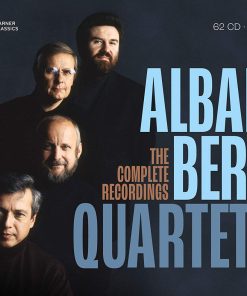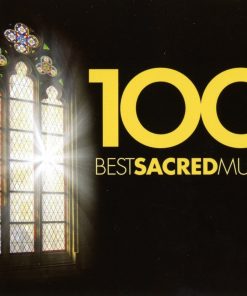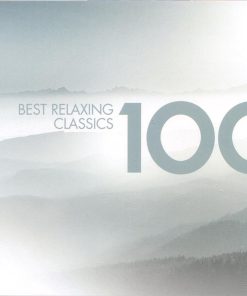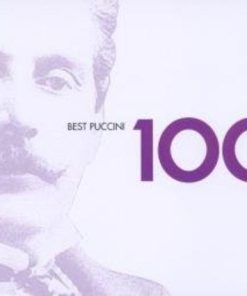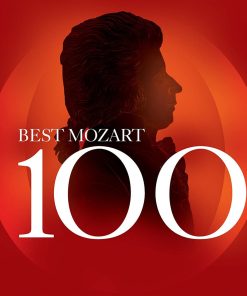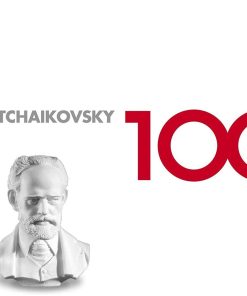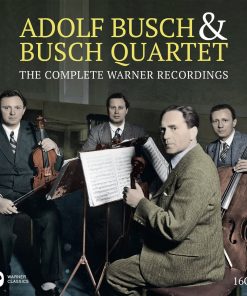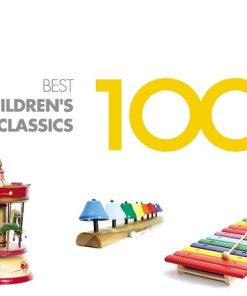MINISTRILES REALES: HESPERION XX, HESPERION XXI, SAVALL (2 HYBRID SACDS) ALIA VOX
$ 22,98 $ 13,79

Jordi Savall
Hespèrion XX-XXI
One of the most interesting new developments on the 15th and 16th century musical scene was the affirmation and development of instrumental music as an independent language, with the flourishing of new forms of musical expression based on vocal forms or improvisation and dance. Just as in 15th-16th century Italy, vocal song inspired the development of Canzoni da sonare and Madrigali passeggiati, from the middle of the 15th century, during the heyday of Alfonso V the Magnanimous’s newly installed court in Naples, the courts that had close contacts with Italian culture, such as those of Flanders and Catalonia-Aragon, saw the emergence a new and increasingly specific repertory which, during the Golden Age of the 15th and 16th centuries, was to become popular and spread throughout the Iberian peninsula and, particularly at the courts of Castile, Aragon, Catalonia and Valencia, as well as those countries where the latter maintained a political presence, such as Flanders, Naples and Sicily. At the same time, it is no mere coincidence that the first paintings and frescoes depicting early versions of the viola da gamba, one of the first typically Renaissance instruments, are to be found in various forms in the region of Valencia and Gandía, two cities which had close ties with Italian culture.

I. Villancicos y Danzas de Altas y Baixas 1450 – 1530
I
1. La Spagna (basse dance). Anónimo (CMM).
2. Dit le Bourguynon. Anónimo.
3. Quedate, Carillo (villancico). Juan del Enzina.
4. De tous biens plaine (Chanson). H. van Ghizeghem (CMM).
5. Collinetto. Anónimo.
II
6. In Exitu Israel. Anónimo (CMCo).
7. Basse danse: Mappa mundi. Johannes Cornago.
8. Chiave, chiave (toccata instrumental). Anónimo (CMM).
9. Pues con sombra de tristura (villancico). Enrique (CMCo).
10. Buenas nuevas de alegría (villancico). Anónimo (CMCo).
11. Si de vos mi bien (villancico). Anónimo (CMCa).
III
12. El cervel mi fa. Anónimo (CMP)
13. Mundus Et Musica (Canon Perpetuum). Ramos de Pareja.
14. Glosa sobre “Nunca fue pena mayor”. Belmonte (CMCo).
15. No tenga nadie sperança (villancico). H. de Xerés (CMCo).
16. Muy triste será mi vida (villancico). Juan Urrede (CMCo).
IV
17. Propinan de Melyor. Anónimo (CMCo)
18. Fantasia. Anónimo (CMM)
19. Danza alta. Francisco de la Torre (CMP).
V
20. Estas noches a tan largas (villancico). Anónimo (CMCa).
21. O desdichado de mi (villancico). Garci Sánchez de Badajoz.
VI
22. Ave color vini clari. Juan Ponçe (CMP).
23. A sombra de mis cabellos. Gabriel (CMP).
24. Quien vos dio tal señorío? (villancico). J. de Triana (CMCo).
VII
25. Un niño nos es nacido (villancico). Anónimo (CMCa).
26. Viva el gran Re Don Fernando. Carlo Verardi.
27. Vive le Roy. Josquin des Prés.
28. La Spagna, a 5. Josquin des Prés.
II. Fantasías, Diferencias y Batallas 1530 – 1690
I
1. Mortal tristura me dieron (villancico). Juan del Enzina.
2. Diferencias sobre las vacas. Anónimo (CMMe).
3. Pavana “La Battaglia” per sonar. Clement Janequin.
4. La Moresca. Pedro Guerrero (CMMe).
II
5. Passamezzo Moderno III, 1553.Diego Ortiz.
6. Romanesca VII. Diego Ortiz
7. Tiento III Primer tono. Antonio de Cabezón.
8. Glosas sobre “Hermosa Catalina”. Francisco Guerrero.
III
9. O voy. Román.
10. Buelbe tus claros ojos (villancico). Anónimo (CMMe).
11. Diferencias sobre “La Dama le demanda”. A. de Cabezón.
12. « Susana un jur » (Glosa). H. de Cabezón (CMMe).
IV
13. Pavana – Gallarda. Lluís del Milà.
14. Fantasía VIII. Lluís del Milà
15. Jam lucis orto sidere. Orlando di Lasso.
16. Ensalada. S. Aguilera de Heredia.
V
17. Himno XVI. Antonio de Cabezón (CMMe.
18. Batalla de Morales. F. Correa de Arrauxo.
VI
19. Omnes de Saba venient. Orlando di Lasso.
20. Tiento de Batalla. S. Aguilera de Heredia.
VII
21. Alme Deus, qui cuncta tenes. Orlando di Lasso.
22. Batalla Imperial. Joan Cabanilles / (J.C. Kerll).
Fast Shipping and Professional Packing
Due to our longstanding partnership with UPS FedEx DHL and other leading international carriers, we are able to provide a range of shipping options. Our warehouse staff are highly trained to pack your goods exactly according to the specifications that we supply. Your goods will undergo a thorough examination and will be safely packaged prior to being sent out. Everyday we deliver hundreds of packages to our customers from all over the world. This is an indication of our dedication to being the largest online retailer worldwide. Warehouses and distribution centers can be located in Europe as well as the USA.
Orders with more than 1 item are assigned processing periods for each item.
Before shipment, all ordered products will be thoroughly inspected. Today, most orders will be shipped within 48 hours. The estimated delivery time is between 3-7 days.
Returns
The stock is constantly changing. It's not entirely managed by us since we are involved with multiple parties such as the factory and our storage. The actual stock can fluctuate at any time. Please understand it may happen that your order will be out of stock when the order is placed.
Our policy is valid for 30 days. If you haven't received your product within 30 days, we're not able to issue either a return or exchange.
You are able to return a product if it is unused and in the same condition when you received it. It must also still remain in the original packaging.
Related products
MUSIC CDS
MUSIC CDS
MUSIC CDS
MUSIC CDS
MUSIC CDS
MUSIC CDS





